Ask Ethan # 99: how do we know the age of the universe?
- Transfer
Youth is a gift of nature, and old age is a work of art.
- Stanislav Jerzy Lec
Every week in our blog highlights the wonders of the universe. You have the opportunity to send questions and suggestions to the “Ask Ethan” weekly column, and I occasionally select one of the questions to answer it. Today's question will not only get an answer from Ethan - he will be asked by Ethan, only by the name of Barbour, who asks:
I have a question on astronomy, in fact: how many independent methods exist for measuring the age of the universe?
I would love to tell you that there are a great many such ways, and they all point to an age of 13.8 billion years, just as there is a lot of evidence for the existence of dark matter. But there are only two of them on the body, and one is much better than the other.
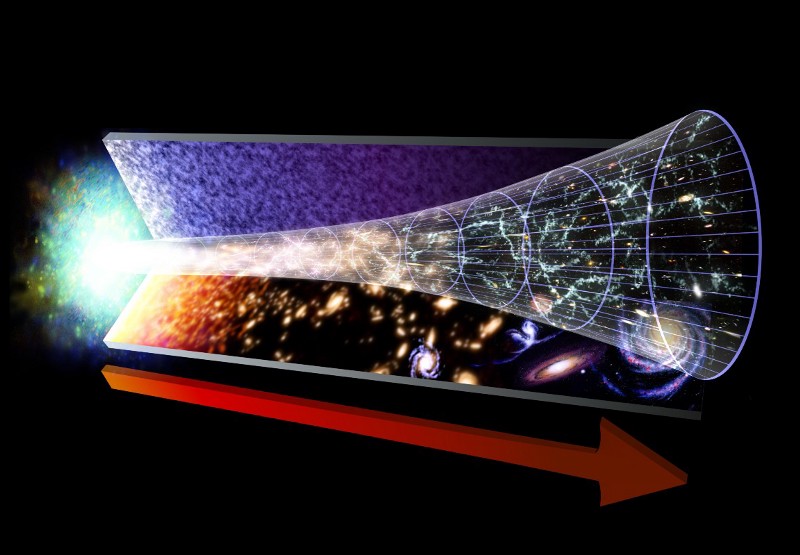
The “good” way suggests thinking about the fact that the Universe is expanding and cooling in our time, and to understand what follows from this that it has been hotter and denser in the past. If we go into the past, in ever earlier times, we will find that with a smaller volume of the Universe, the particles of matter in it were not only closer to each other, but the photon wavelengths were shorter, because the expansion of the Universe stretched them to such a state in which we see them today.
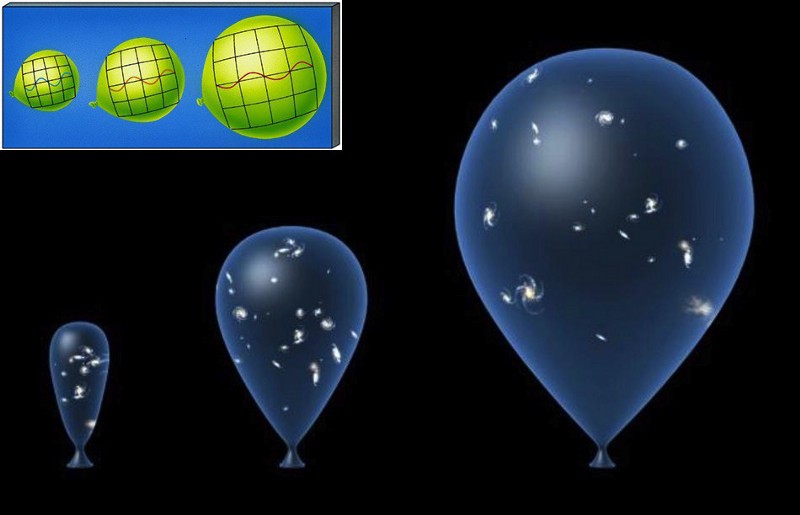
Since the photon's wavelength determines its energy and temperature, a photon with a shorter wavelength is more energetic and hot. Moving back in time, we see a rise in temperature, and at some point we reach the early phases of the Big Bang.
This is important: there is the “earliest” stage of the Big Bang!
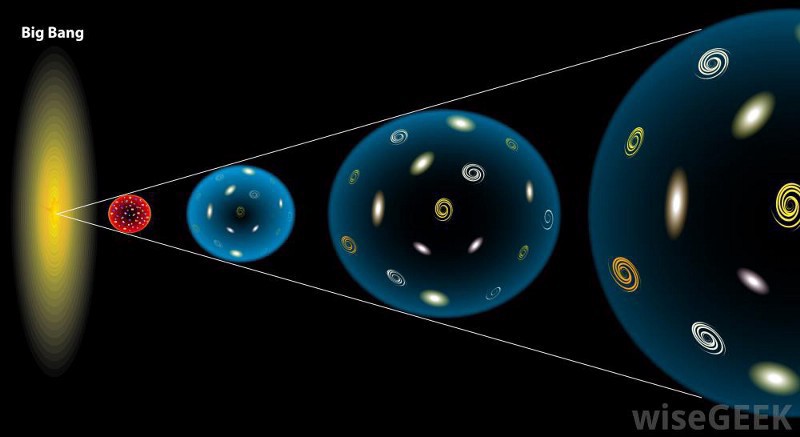
If we extrapolate back endlessly, we will reach a singularity where physics stops working. Our modern understanding of the early phases of the Universe gives us to understand that the Big Bang was preceded by the inflation phase, and the duration of this state is not defined.
Speaking about the age of the Universe, we are talking about the time that has passed since the Universe for the first time became possible to describe through the hot Big Bang, and to this day.

According to the laws of the General Theory of Relativity, in our Universe, in which:
• the density on the largest scales is uniform,
• the same laws and general properties apply everywhere,
• regardless of the chosen direction, everything is the same everywhere,
• The Big Bang happened everywhere at once,
there is a unique connection between its age and its expansion throughout its existence.

In other words, if we manage to measure how the Universe is expanding now, and how it has expanded during its life, we will learn what it consists of. We can recognize this through many observations, including:
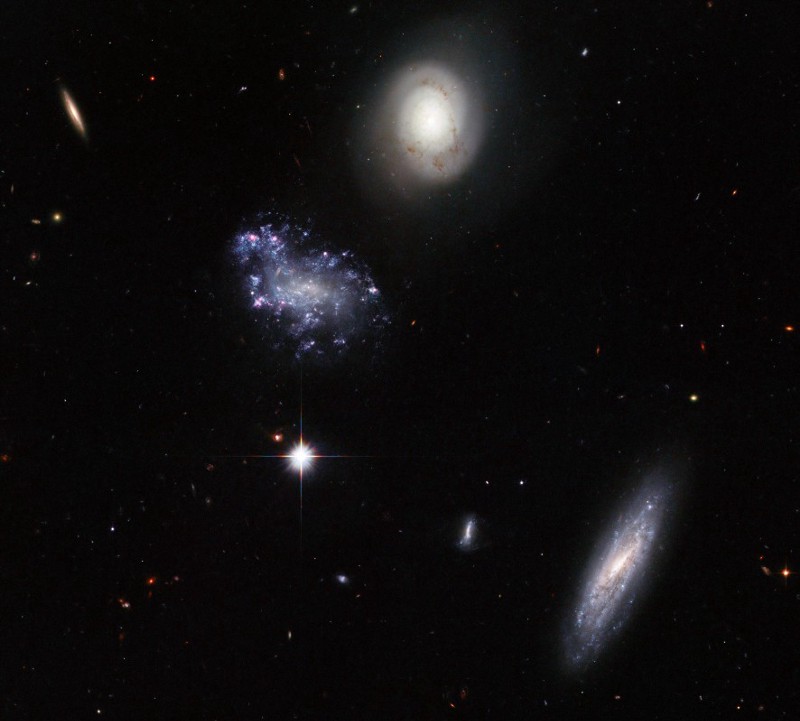
• Direct measurements of brightness and distance to objects of the Universe, such as stars, galaxies, supernovae, which allows us to build a ladder of space distances.
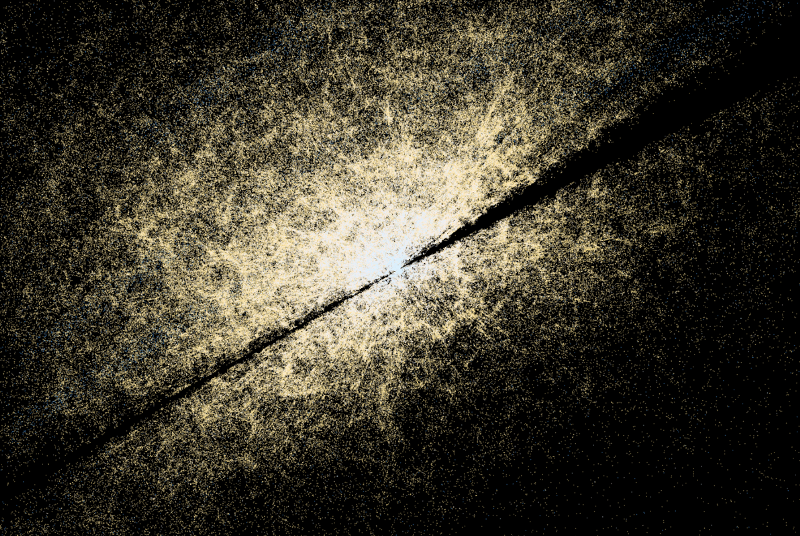
• Measurement of large-scale structures, clusters of galaxies, and baryon acoustic oscillations.
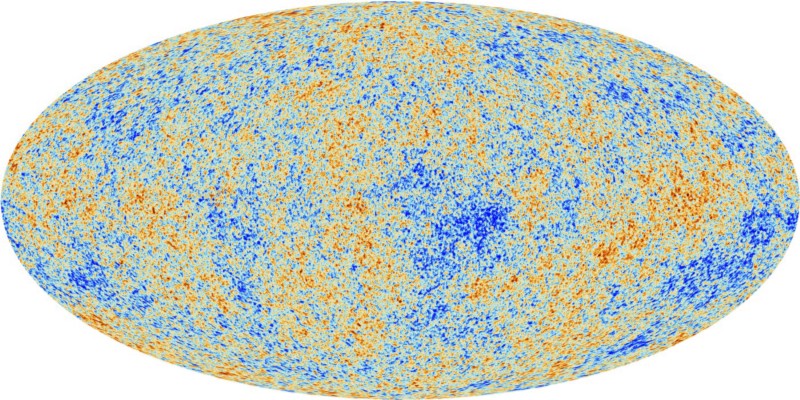
• Measurement of the background radiation fluctuations, “photograph” of the Universe, taken at the age of 380,000 years.
If we put it all together, then we get the Universe, which is 68% of dark energy today, 27% of dark matter, 4.9% of normal matter, 0.1% of neutrinos, 0.01% of radiation, and, in general, everything.
Having considered today's expansion of the Universe, we can carry out an extrapolation back in time, learn the history of its expansion, and, consequently, age.
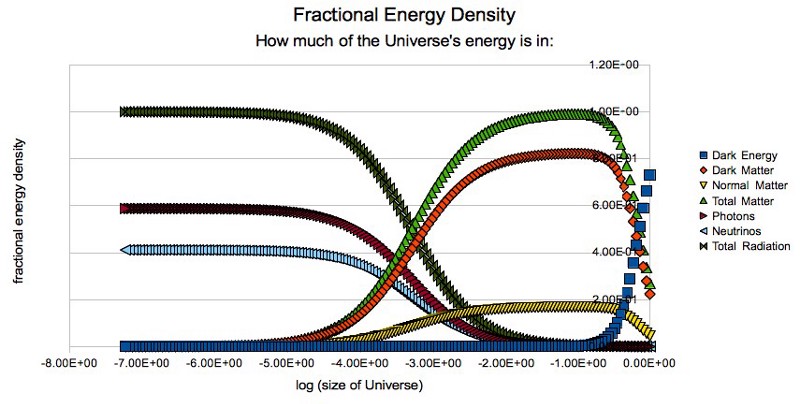
The resulting number is most accurate from the Planck telescope, but supplemented by other sources, such as the measurement of supernovae, the key project of the telescope. Hubble on measuring intergalactic distances and Sloan digital celestial survey - we get that the age of the universe today is 13.81 billion years with an error of only 120 million years. This means that we are confident in the age of 99.1%, which is quite surprising!
Yes, we have different data sets leading to this conclusion, but in fact, the method is the same. We are just lucky that there is a consistent picture that they all point to, but in fact, none of these restrictions alone is enough to say “this is our Universe”. All of them offer a set of options, and only their intersection tells us where we live.
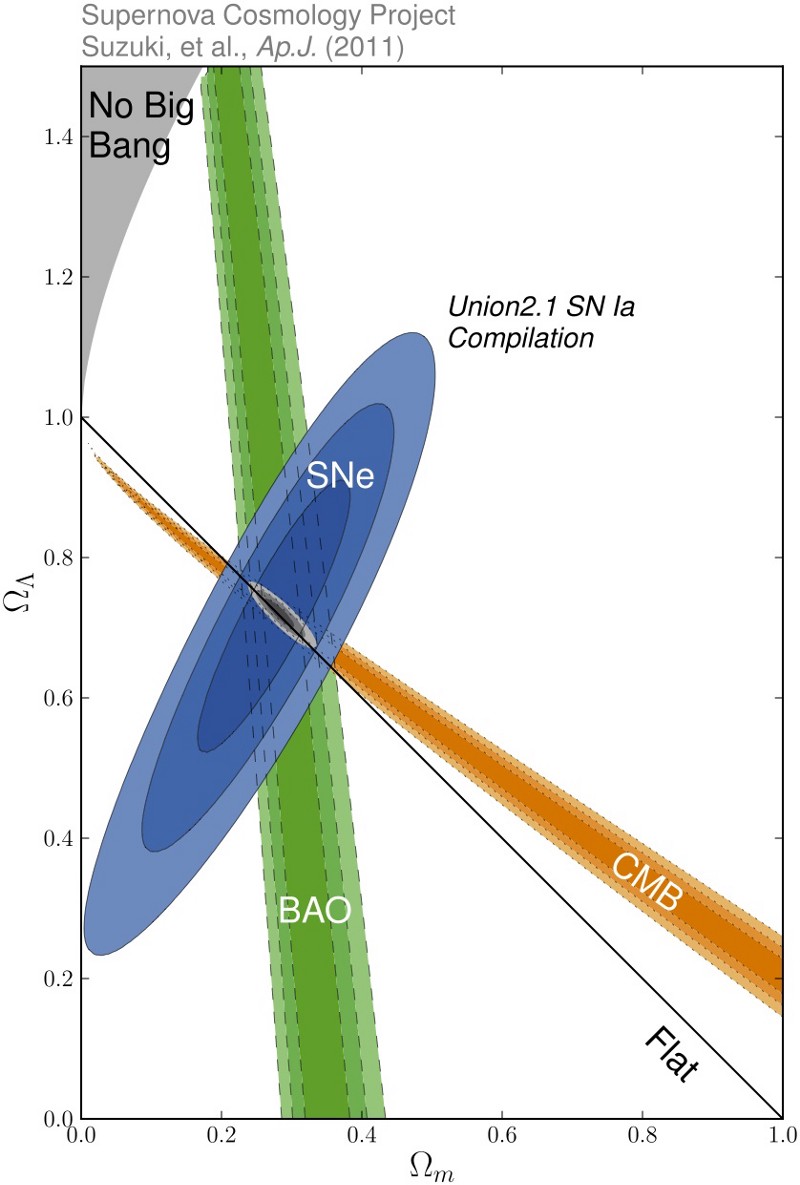
If the Universe had the same properties as today, but it was 100% composed of normal matter, without any dark matter and dark energy, then its age would have to be only 10 billion years. If the Universe had 5% of normal matter (without any dark matter and dark energy), and the Hubble constant would be 50 (km / s) / Mpc, not 70 (km / s) / Mpc, then the Universe would be 16 billion years old. But the combination of all exactly the properties tells us about the age of 13.81 billion years, with little error. And this is an amazing achievement of science.
But this is one method. He is the chief, the best, the most complete, and mountains of evidence point to him. There is one more, and it is very useful for checking the results.

This is what we know the peculiarities of the life of stars, the burning of their fuel and their death. More precisely, we know that all stars, when they are alive and burn the main fuel (conducting the synthesis of helium from hydrogen), have a specific brightness and color, and they hold this brightness and color for a certain time: until their cores start running out of fuel.
At this moment, the brightest, blue and massive stars begin to “turn off” from the main sequence (the curved line on the color-size diagram below), and turn into giants and supergiants.
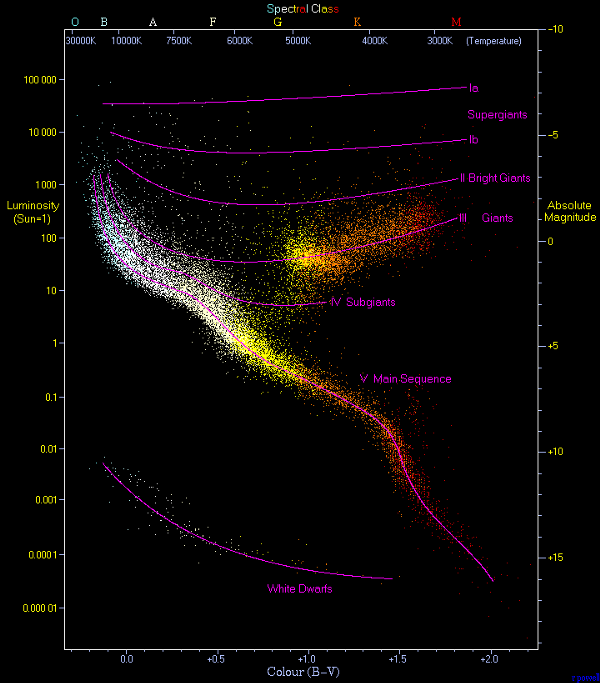

If we find this shutdown point in a cluster of stars that formed at the same time, we can find out - knowing how the stars work - the age of the stars in the cluster. Looking at the oldest globular clusters, in which the least heavy elements are the least, and the shutdowns of which occur with the least massive stars, we find that their age is consistently equal to about 13.2 billion years, and no more. (But here there is a serious error in a billion years).
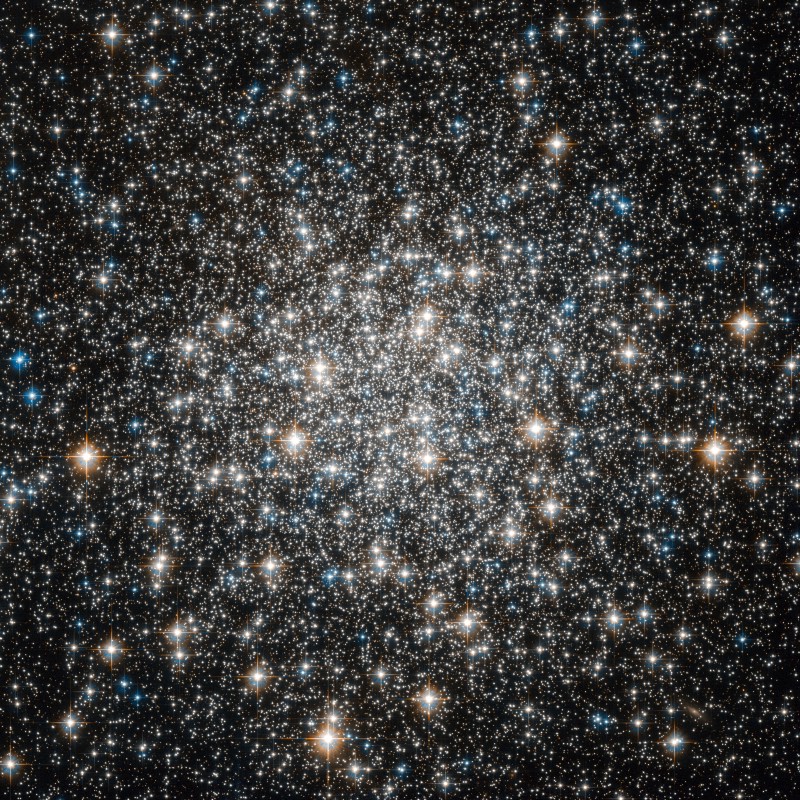
Stars aged 12 billion years or less occur very often, but no one has seen stars aged 14 billion years or more, although in the 1990s they often mentioned age 14-16 billion years (improved understanding of stars and their evolution reduced these estimates) .
So, we have two methods - one from cosmic history and one from the measurement of near stars - indicating that the age of our Universe is between 13 and 14 billion years. No one would be surprised if we were 13.6 or 14.0 billion years old, but we are not very 13.0 or 15.0 billion years old with very high accuracy. You can safely call the age of 13.8 billion years - and now you know why!
